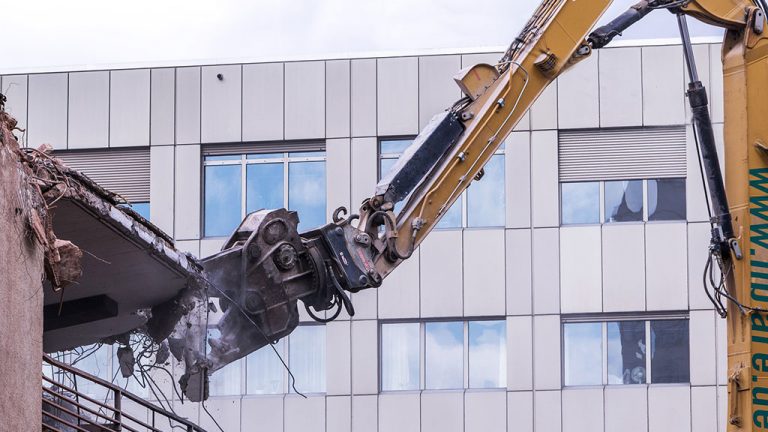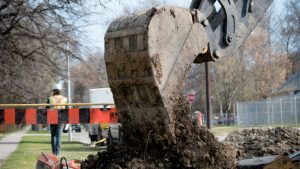London, England is famous for many things, Buckingham Palace, Westminster Abbey and the Houses of Parliament among them, but deep down in the ground the city is also famous for it’s massive “fatberg.”
Weighing equal to 11 of those famous double-decker buses spread over two football fields, it blocked the city’s sewage network until workers with picks, shovels and machinery went in and attacked it to cut it down to size.
Researchers at the University of British Columbia, however, may have developed a process which might not only offer hope in defeating those fatbergs, a mass of fat, condoms, sanitary pads, wet wipes and diapers, but also in accelerating bio-digestion and boosting the amounts of biogas energy and useful fertilizer that can be extracted from sewage sludge after treatment.
It’s early days yet but the research, which started 10 years ago, is starting to show promising results and pilots in Abbottsford and Vancouver are expected to add more data and take the concept to the next level.
Working with UBC professor Dr. Victor Lo, research associate Asha Srinivasan and her team built on previous research from the mid-2000s looking at using microwaves to disrupt and separate sewage sludge and animal manure.
“At first we looked at how we could speed up the bio-digester process because it takes 25 days or more for the microbes to work so you end up building these huge bio-digesters to handle the flow,” she says.
Processing plants also often add fats, oils and grease (FOG) to the mix to better feed the microbes, but they are limited to about 25 per cent by volume before the system bogs down, she says.
The team started applying the Microwave Advanced Oxidation Process (MWAOP) to the FOG and found that not only did it accelerate the breakdown of solids it also generated more phosphates for fertilizer and more biogas.
“We took a microwave and added some hydrogen peroxide, which is just hydrogen and water, so very safe and green, and the microwave transformed the hydrogen peroxide into hydroxyl radicals, powerful oxidants,” she says.
At this stage the testing has used a two-inch sector of silicon pipe which is subjected to a 2450 MHz microwave, the same frequency as a household appliance.
Current testing is designed around a 915 Mhz microwave generator at five-kilowatt (kw) power with a 25 kw unit also coming on line.
The system raises the temperature to 90 to 110 C from the ambient 10 to 20 C and seems initially to be a solution to agriculture manure which is notoriously difficult to break down.
“The cow’s digestive system is a pretty good system, so what’s left is hard to break down because even the cow couldn’t break it down,” says Srinivasan.
The difficulty for farmers using bio-digesters onsite is that it becomes uneconomical to try and extract the energy from the organic material, even with the premiums paid by British Columbia utilities for feeding natural gas back into the grid.
Once treated, the solids break down in to volatile fatty acids, which are short carbon chains that in turn are easier for the microbe to digest.
So, how does all this help in targeting fatbergs? The goal ultimately, she says, is to remove the source of fatbergs by incentivizing businesses to donate or sell their kitchen grease, cooking oils and organic fats to local municipalities instead of flushing them into the system.
It’s gaining traction and Srinivasan is chief technology officer of a spin-off company, Boost Environmental Systems in B.C., which is commercializing the process.
FOGs have a value when combined with sewage sludge and animal manure, she says, because they can help with anaerobic digestion which breaks down the mix.
But, as noted, right now the mix is limited to about 25 per cent FOG addition. However, treating the FOG with MWAOP allows up to 75 per cent more to make up the mix in the bio-digester and a shorter turn around of 10 to 15 days.
That means more bio-gas and more residual solids, high in phosphates rendered soluble by the process.
The key, however, isn’t civil engineering, its social engineering. Cities must educate their residents and set up programs that makes diversion a no-brainer and that’s just what they’re doing in London, Ont.
London’s You Turn program issues biodegradable cups to residents so they can put their used oils into it and then drop them off at waste centres for processing.
Now, instead of spending $600,000 a year to blast its own fatbergs with a high-pressure water sprayer, they’re saving $100,000 year.
The FOG isn’t mixed with sewage but sent to a company that turns it into fuel.
Other municipalities are also starting their own programs or at least thinking about it.
The team at UBC hopes if they can develop their MWAOP on a commercial scale they could add treated FOG to sewage solids, reduce anaerobic digestion time and produce more cash value at the other end.











Recent Comments
comments for this post are closed